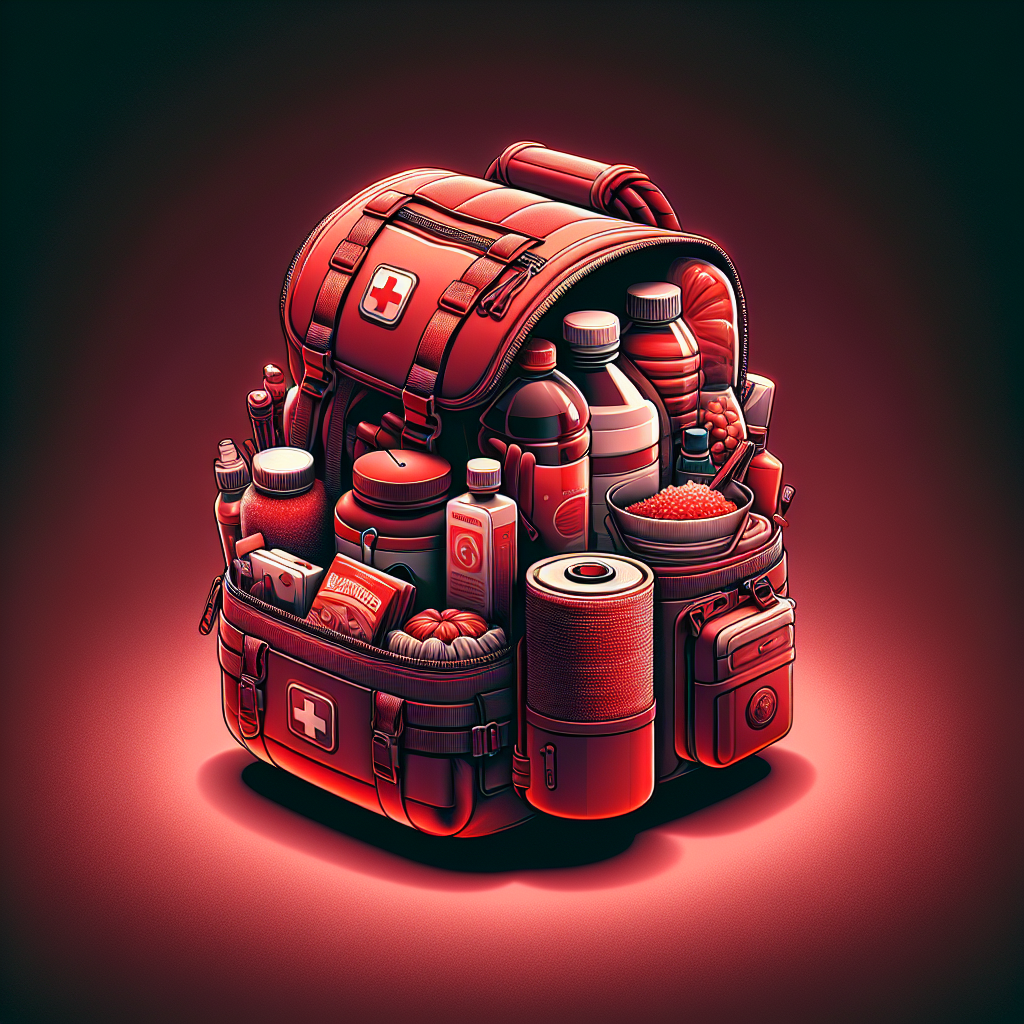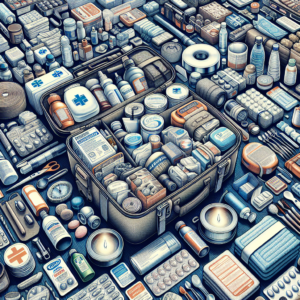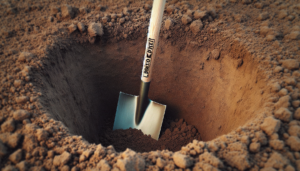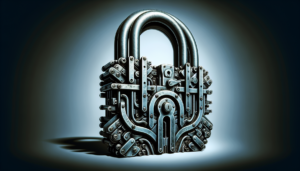
In this article, you will discover an essential guide to creating a basic emergency preparedness kit. Whether you are a seasoned prepper or a novice in emergency planning, having a well-equipped kit is crucial to your safety and well-being in times of crisis. We will walk you through the necessary items to include in your kit, focusing on the essential supplies that will help you navigate through various emergency situations. By following our recommendations and considering your specific needs, you will be better prepared to handle unforeseen events with confidence and resilience.
Choosing the Right Container
Considerations for container selection
When it comes to creating an emergency preparedness kit, choosing the right container is essential. It should be durable, easily portable, and able to protect your supplies from damage. Consider using a sturdy backpack or a waterproof storage container. Additionally, ensure that the container is large enough to accommodate all your supplies, but not too bulky to hinder mobility.
Types of containers to consider
There are various types of containers available for emergency preparedness kits, each with its own advantages. A backpack provides mobility and portability, making it an excellent choice for situations where being on the move is necessary. Alternatively, waterproof storage containers are perfect for ensuring your supplies stay dry and protected during floods or heavy rain. Consider your specific needs and choose a container that best suits your requirements.
Size and organization
When organizing your emergency preparedness kit, it is important to consider the size and organization of the container. Opt for a container with compartments or pockets to help keep your supplies organized and easily accessible. This will enable you to quickly locate the items you need during an emergency. Additionally, consider labeling your supplies to further enhance organization and efficiency.
Essential Supplies
Water
Water is a crucial component of any emergency preparedness kit. It is recommended to have at least one gallon of water per person per day for drinking and sanitation purposes. Ensure that you have an adequate supply of water for all members of your household, including pets, for a minimum of three days. Consider storing water in tightly sealed, food-grade containers to prevent contamination.
Food
Non-perishable food items are vital for sustaining yourself and your family during an emergency. Choose foods that have a long shelf life and require minimal preparation. Canned goods, granola bars, dried fruits, and nuts are excellent options. It is advisable to have a three-day supply of non-perishable food for each person in your household. Don’t forget a manual can opener for canned goods.
First aid kit
A well-stocked first aid kit is essential for addressing minor injuries and providing immediate medical assistance. Ensure your first aid kit contains items such as adhesive bandages, gauze, antiseptic wipes, tweezers, scissors, and disposable gloves. Include a first aid manual for guidance on administering basic medical care. Regularly check your kit for expired items and replenish as necessary.
Medications
If you or anyone in your household takes prescription medications, ensure you have an adequate supply for at least a week. Remember to rotate medications regularly to prevent expiration. Additionally, include over-the-counter medications such as pain relievers, antacids, and antihistamines in your kit. Don’t forget any necessary medical supplies like insulin, inhalers, or spare glasses.
Flashlight and extra batteries
In the event of a power outage, a flashlight and extra batteries are essential for providing light and visibility. Choose a reliable, battery-powered flashlight and pack extra batteries to ensure long-lasting functionality. LED flashlights are a popular choice due to their energy efficiency and brightness.
Emergency blanket
Emergency blankets, also known as space blankets or thermal blankets, are lightweight, compact, and designed to retain body heat. They provide insulation and protection from the elements in case of exposure to adverse weather conditions. Ensure you have one emergency blanket per person in your household.
Whistle
A whistle is a simple yet effective tool for attracting attention during emergencies. It can help rescuers locate you if you are in need of assistance. Keep a whistle in your emergency preparedness kit and familiarize yourself with its proper use.
Dust masks
In situations where air quality is compromised, such as during a wildfire or a dusty environment, dust masks are important for respiratory protection. Choose N95 or higher-rated masks to filter out harmful particles and ensure a proper fit for maximum effectiveness.
Extra clothes
Including extra clothes in your emergency preparedness kit is crucial, especially if you need to evacuate or endure cold weather. Pack appropriate clothing for each member of your household, including sturdy shoes, socks, and jackets. Consider seasonal variations and include items such as hats, gloves, and rain gear if necessary.
Multi-purpose tool
A multi-purpose tool, such as a Swiss Army knife or a multi-tool, is a versatile equipment that can come in handy during various situations. It typically includes tools like knives, pliers, screwdrivers, and can openers. Having a multi-purpose tool in your kit ensures that you are prepared for any minor repairs or tasks that may arise.
Water
Water quantity
Water is one of the most critical supplies to have in an emergency preparedness kit. It is essential for hydration, cooking, and personal hygiene. The general rule of thumb is to store at least one gallon of water per person per day for a minimum of three days. Be sure to consider the needs of each member of your household, including pets, when calculating the required quantity.
Water storage options
When storing water for emergencies, it is important to use proper containers that are clean and food-grade. Consider using sturdy plastic containers or purchase commercially available water storage containers. Avoid using containers that previously held chemicals or non-food-grade substances, as these can contaminate the water. Ensure that your containers are tightly sealed to prevent leakage or evaporation.
Water purification
In situations where a clean water source is not readily available, having water purification methods in your emergency preparedness kit is essential. Portable water filters or purification tablets can be used to remove contaminants and make water safe for consumption. Familiarize yourself with the instructions provided with your water purification methods and ensure you have an adequate supply.
Food
Non-perishable food options
When selecting non-perishable food for your emergency preparedness kit, choose items that have a long shelf life and require little to no preparation. Canned goods, such as fruits, vegetables, and meats, are convenient options as they can be eaten straight from the can. Other non-perishable food items include granola bars, dried fruits, nuts, peanut butter, and crackers. Ensure you have enough food to last for at least three days.
Considerations for dietary restrictions
If you or anyone in your household has specific dietary restrictions or food allergies, it is important to take these into account when selecting food for your emergency kit. Look for non-perishable options that meet these specific requirements, such as gluten-free or vegetarian items. It may also be helpful to include any necessary food preparation utensils or equipment.
Food storage and rotation
To ensure the longevity and freshness of your emergency food supply, it is crucial to store it properly and rotate it periodically. Store your non-perishable food in a cool, dry place away from direct sunlight. Regularly check expiration dates and replace any expired items. Consider keeping a list of the expiration dates and periodically update it to stay organized.
First Aid Kit
Basic supplies to include
A well-stocked first aid kit is essential for addressing minor injuries and providing initial medical care. Make sure your kit includes adhesive bandages in different sizes, sterile gauze pads, adhesive tape, antiseptic wipes, antibiotic ointment, tweezers, scissors, disposable gloves, and a CPR mask. It is also recommended to include a first aid manual to guide you through administering basic medical care.
Medications and medical records
In addition to basic first aid supplies, include any necessary medications in your first aid kit. This may include prescription medications, over-the-counter medications (such as pain relievers and antihistamines), and any specialty medications required for specific medical conditions. It is also advisable to keep copies of important medical records, such as allergies and pre-existing conditions.
Regularly checking and updating
Your first aid kit should be regularly checked and updated to ensure that all supplies are up to date and in good condition. Check for expired items and replace them promptly. Periodically review your kit’s contents to ensure it remains adequately stocked for any potential emergencies.
Additional Medical Supplies
Prescription medications
If you or anyone in your household takes prescription medications, it is crucial to have an adequate supply in your emergency preparedness kit. Ensure that you have enough medication for at least a week, and regularly rotate it to prevent expiration. Consider having a written list of the medications, dosages, and prescribing doctors in case you need to refill or replace them.
Over-the-counter medications
In addition to prescription medications, include over-the-counter medications in your emergency kit to address common ailments and minor health issues. Pain relievers, fever reducers, antacids, antihistamines, and cough medicine are some examples of useful over-the-counter medications to have on hand. Check the expiration dates regularly and replace as needed.
Special medical needs
If anyone in your household has special medical needs, ensure that your emergency preparedness kit includes the necessary supplies to accommodate those needs. This could include items such as insulin, spare oxygen tanks, inhalers, or medical equipment. Consult with your healthcare provider to determine what specific items you should include and how to properly store and maintain them.
Personal hygiene items
Maintaining personal hygiene during an emergency is essential for overall well-being. Include personal hygiene items such as toothbrushes, toothpaste, soap, hand sanitizer, toilet paper, feminine hygiene products, and any other necessary hygiene supplies. These items can help prevent illness and promote a sense of normalcy during challenging situations.
Emergency Tools and Equipment
Flashlight and extra batteries
In the event of a power outage, a reliable flashlight and extra batteries are essential for providing light and ensuring your safety. Choose a durable, battery-powered flashlight and pack a sufficient number of extra batteries to last for an extended period. LED flashlights are recommended for their energy efficiency and brightness.
Emergency blanket
An emergency blanket, also known as a space blanket or thermal blanket, is a lightweight and compact item that provides insulation and warmth during emergencies. These blankets are designed to retain body heat and can help prevent hypothermia in cold weather conditions. Include one emergency blanket per person in your household.
Whistle
A whistle is a simple yet effective tool for attracting attention and signaling for help during emergencies. It can help rescuers locate you if you are in distress or need immediate assistance. Keep a whistle in your emergency kit and familiarize yourself with its proper use.
Dust masks
Dust masks are important for respiratory protection in situations where air quality is compromised, such as during wildfires or in dusty environments. Choose N95 or higher-rated masks that can filter out harmful particles. Ensure a proper fit and consider having enough masks for each member of your household.
Battery-powered or hand-cranked radio
During emergencies, access to reliable information is crucial. Include a battery-powered or hand-cranked radio in your emergency kit to stay informed about the latest updates and developments. This will enable you to receive instructions and important announcements from local authorities. Pack extra batteries or a hand-cranked radio to ensure continuous operation.
Extra clothes and sturdy shoes
In case of evacuation or adverse weather conditions, having extra clothes and sturdy shoes can significantly improve your comfort and safety. Pack appropriate clothing for each member of your household, considering the local climate and season. Include items such as jackets, hats, gloves, rain gear, and extra pairs of socks. Sturdy shoes are particularly important, as they provide protection and support during challenging situations.
Multi-purpose tool
A multi-purpose tool, such as a Swiss Army knife or a multi-tool, is a versatile item that can assist you in various situations. These tools typically include features like knives, pliers, screwdrivers, and can openers. Having a multi-purpose tool in your emergency kit ensures that you are prepared for minor repairs, tasks, or unforeseen circumstances.
Duct tape and plastic sheeting
Duct tape and plastic sheeting are useful tools for improvising temporary shelter or sealing off areas during emergencies. They can help protect you from the elements or create a barrier against hazardous materials. Include these items in your kit for added flexibility and adaptability.
Local maps
During an emergency, having access to local maps is invaluable for navigation and route planning. Include maps of your immediate area, as well as nearby towns or cities, to help you navigate unfamiliar surroundings. Familiarize yourself with important landmarks, evacuation routes, and local emergency services beforehand.
Cash and important documents
In situations where electronic payment methods may be inaccessible, having cash on hand is essential. Include a small amount of cash in your emergency kit, in different denominations, to cover immediate expenses. Additionally, keep important documents such as identification, insurance policies, wills, and power of attorney documents in a waterproof container or sealed plastic bag.
Communication and Power
Charging devices
In the event of a power outage or limited access to electricity, having a plan to charge your electronic devices is crucial. Include portable charging devices, such as power banks or solar chargers, in your emergency kit. Ensure that these devices are fully charged and periodically check their battery life to maintain functionality.
Backup power options
Backup power options, such as a generator or a car power inverter, can provide electricity for essential devices and appliances during extended power outages. Consider the specific needs of your household and invest in a backup power solution that aligns with those requirements. Ensure you have the necessary fuel or charging capability to operate your backup power source.
Emergency contact information
Make sure to include a list of emergency contact information in your kit. This should include the phone numbers of family members, friends, local emergency services, and healthcare providers. Consider printing out this information and storing it in a waterproof container or laminating it for protection.
Personal and Important Documents
Identification documents
Having identification documents readily available during emergencies is critical. Gather essential documents such as passports, driver’s licenses, social security cards, and birth certificates. Secure these documents in a waterproof container or sealed plastic bag to protect them from water damage. Consider making photocopies or digital copies of these documents and store them separately for added backup.
Insurance policies
Homeowner’s insurance, renter’s insurance, health insurance, and other insurance policies should be included in your emergency preparedness kit. These documents are important for processing claims and accessing necessary coverage during and after an emergency. Keep these documents in a secure, waterproof container to ensure their protection.
Will, testament, and power of attorney
In the unfortunate event of a personal emergency or disaster, having a will, testament, and power of attorney documents readily available is crucial. These documents outline your wishes and provide legal authorization for decision-making. Store them in a secure, waterproof container or consider keeping copies with a trusted family member or attorney.
Emergency contact information
Ensure that all members of your household have a list of emergency contact information easily accessible. Include phone numbers for family members, friends, neighbors, as well as local emergency services. This information should be stored on paper or digitally on a phone or other electronic device, ensuring it is readily available during an emergency.
Special Considerations
Considerations for pets
If you have pets, it is important to include them in your emergency preparedness plans. Pack necessary pet supplies such as food, water, medications, a leash, harness, and a crate or carrier. Additionally, have a current photo of your pet and proper identification, including tags and microchips. Consider their specific needs, such as comfort items or toys, to help reduce stress during emergencies.
Baby and infant needs
If you have infants or young children, it is crucial to include specific items to meet their needs in your emergency kit. Pack an ample supply of diapers, baby wipes, formula, bottles, and baby food. Include necessary comfort items such as blankets, pacifiers, and toys to help soothe and entertain them. Consider their unique needs and consult with healthcare professionals for any additional recommendations.
Seniors and individuals with special needs
Consider the unique needs of seniors or individuals with special needs in your household when preparing your emergency kit. Ensure you have an adequate supply of medications, medical equipment, and any necessary assistive devices. Include comfortable clothing, extra blankets, and personal hygiene items tailored to their specific requirements. Make sure you also have a plan for their transportation and evacuation needs.
Considerations for specific weather conditions
Depending on your geographical location, certain weather conditions may pose specific hazards and require additional preparations. Consider the potential risks, such as hurricanes, floods, or winter storms, and tailor your emergency kit accordingly. For example, if you live in an area prone to hurricanes, include hurricane shutters, tarps, or additional water-resistant supplies in your kit. Stay informed about regional weather patterns and seek guidance from local authorities to ensure you adequately prepare for specific weather-related emergencies.
In conclusion, creating a basic emergency preparedness kit involves careful consideration and planning. By choosing the right container, gathering essential supplies, and addressing specific needs, you can ensure that you are prepared for a wide range of emergency situations. Remember to periodically check and update your kit, familiarize yourself with its contents and their usage, and stay informed about potential hazards to further enhance your emergency preparedness.






